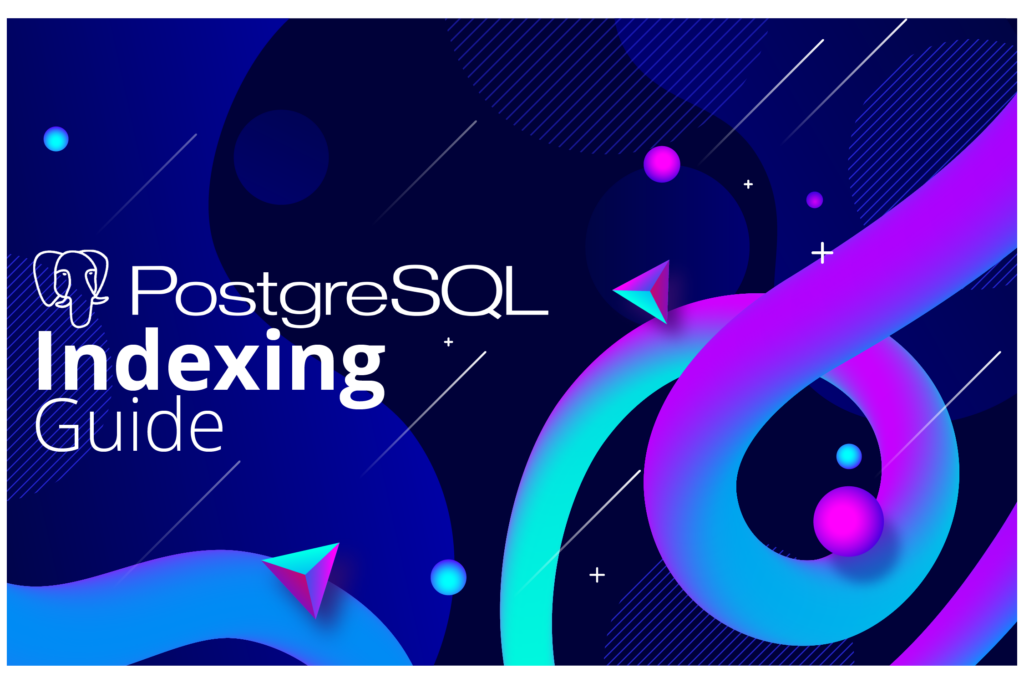

In the entire ecosystem of database performance optimization, no other operation offers such a massive and immediate return on investment as creating an index. A single, well-placed CREATE INDEX statement can literally transform a query that takes minutes and saturates the CPU into an operation that executes in milliseconds with negligible resource cost. It is the most powerful tool in an engineer’s arsenal for scaling a system. However, this same apparent simplicity hides a complexity that leads to chronic and widespread errors.
Reactive indexing, done without a deep analysis of the workload, invariably leads to one of two scenarios: the lack of crucial indexes that condemns reads to inefficiency, or the proliferation of useless indexes that strangles write performance. In a robust ecosystem like PostgreSQL’s, with its variety of index types and its complex query planner, the errors can be even more subtle and costly. This definitive guide offers a technical deep dive into the most common and damaging errors in PostgreSQL indexing strategy and presents the correct, data-driven approach to fix them.
The Foundation: Why Indexing is a Double-Edged Sword in postgreSQL
Before analyzing the errors, it is crucial to understand the fundamental trade-off that an index represents. An index is not a magical, free solution. It is a redundant data structure, an optimized copy of a portion of your data, designed to speed up searches.
The Benefit (Read/SELECT): Without an index, a search (WHERE col = ‘value’) forces PostgreSQL to perform a sequential scan (Seq Scan), reading the table block by block from beginning to end. With a B-Tree index, the database can navigate a balanced tree structure to find the exact location of the data in logarithmic time, a drastically faster and cheaper operation in terms of I/O and CPU.
The Cost (Write/INSERT, UPDATE, DELETE): This is the side that many forget. When you write to the table, you are not just writing to the table’s data (known as the heap in PostgreSQL). You need to update every index that exists on that table. If a users table has five indexes, a simple INSERT results in six write operations to the disk (one to the table, five to the indexes). An UPDATE that modifies an indexed column results in a deletion and an insertion in the index structure. Therefore, every index you add speeds up certain reads at the cost of slowing down all writes.
Understanding this trade-off is the first step to intelligent indexing. The goal is not to create as many indexes as possible, but to create the minimum necessary indexes to efficiently support the critical queries of your workload.
Error 1: Over-indexing (Index Proliferation) and the Cost of Writes
Over-indexing is the direct result of reactive and ungoverned indexing. With each new read performance problem, a new index is added, often without checking if an existing index could already satisfy the query, perhaps with a small modification. Over time, the table accumulates dozens of indexes. Many of them are redundant (indexes on (A, B) and (A)), overlapping, or simply never used.
This “index sprawl” has serious consequences:
- Write Performance Degradation: As we’ve seen, each index adds overhead to INSERTs, UPDATEs, and DELETEs. In a high-frequency transactional system (an e-commerce site, a payment platform), this overhead can become the main system bottleneck, causing long waits and lock contention.
- Increased Storage Cost: Indexes consume significant disk space. On very large tables, the total size of the indexes can easily exceed the size of the table itself, inflating storage and backup costs.
- Slower Maintenance: Maintenance operations like VACUUM and REINDEX take longer to complete on tables with many indexes.
How to Fix It: Identifying and Removing Useless Indexes
Fortunately, PostgreSQL provides the tools to identify these “dead weight” indexes. The pg_stat_user_indexes view contains counters that track the usage of each index.
SELECT schemaname, relname AS table_name, indexrelname AS index_name, idx_scan FROM pg_stat_user_indexes WHERE idx_scan = 0;
This query lists all indexes that, since the last statistics reset, have never been used in an index scan (Index Scan or Index Only Scan). If an index appears on this list consistently over weeks, it is a strong candidate for removal.
The manual approach, however, is reactive. An observability platform like dbsnOOp automates this process continuously. It analyzes the workload over time and can differentiate between an index that is truly useless and one that is used only for month-end closing queries, for example. By providing a clear and historically data-driven list of unused indexes, it allows the engineering team to perform a safe cleanup, recovering write performance and reducing maintenance costs.
Error 2: The Order of Columns in Composite Indexes Matters
A composite (or multi-column) index is an index created on more than one column. Ex: CREATE INDEX ON users (last_name, first_name). The effectiveness of this index is dictated almost entirely by the order in which the columns are defined.
The fundamental rule is based on selectivity and query patterns. The column that filters the most data (the most selective, with the highest cardinality) should come first.

A Practical Example: Cardinality
Imagine an issues table with the columns project_id (high cardinality, e.g., 10,000 distinct projects) and status (low cardinality, e.g., ‘open’, ‘closed’, ‘in_progress’). Consider the query:
SELECT * FROM issues WHERE project_id = 42 AND status = 'open';
- Incorrect Index: CREATE INDEX idx_wrong ON issues(status, project_id);
- How PostgreSQL uses it: It first finds all issues with status = ‘open’, which could be millions. Within this massive set, it then looks for project_id = 42. Most of the work is done in the second step.
- Correct Index: CREATE INDEX idx_correct ON issues(project_id, status);
- How PostgreSQL uses it: It first finds the small, well-defined set of issues for project_id = 42. Within this already filtered result, it quickly finds the ones with status = ‘open’.
The performance difference between the two can be orders of magnitude. Furthermore, the correct index can be used for queries that filter only by project_id, but the incorrect index cannot be used efficiently for queries that filter only by project_id.
How to Fix It: Indexing Queries, Not Tables
The decision about the order of columns should not be a guess. It should be a direct response to the queries your system executes. That’s why the central principle of indexing is: “You don’t index tables, you index queries.”
dbsnOOp solves this problem at its source. By analyzing the most costly queries in your workload, its index recommendations are generated based on the actual WHERE and JOIN clauses. If the query always filters by project_id and, optionally, by status, the recommendation will be for an index on (project_id, status), ensuring the optimal order and eliminating human error.
Error 3: Ignoring Index Types Beyond the Standard B-Tree
PostgreSQL shines for its extensibility, and this is especially true of its index types. Using only the standard B-Tree is like having a full toolbox and using only the hammer for everything. Using the right type of index for the workload can result in massive performance gains and enable functionalities that would otherwise be impossible.
- B-Tree: The standard. Ideal for scalar data with a natural ordering. Perfect for _id, email, timestamp, etc. Supports operators =, >, <, BETWEEN, LIKE ‘prefix%’, IN.
- GIN (Generalized Inverted Index): The choice for composite data. Instead of indexing the entire item, it indexes the elements within the item. It is the solution for:
- JSONB: To quickly answer WHERE data ->> ‘key’ = ‘value’; or WHERE data @> ‘{“key”: “value”}’. A B-Tree cannot look “inside” a JSONB efficiently.
- Arrays: To quickly find rows where an array contains a certain value (@>).
- Full-Text Search: To index the lexemes (tsvector) of a text and allow for extremely fast textual searches.
- GiST (Generalized Search Tree): A more complex framework, useful for indexing data that can overlap. Its most famous use case is with the PostGIS extension for geospatial data. A GiST index on a geometry column allows you to answer questions like “Find all restaurants within this radius” extremely efficiently.
- BRIN (Block Range Indexes): A lighter type of index, ideal for very large tables whose data has a natural correlation with its physical order on the disk (e.g., a log table ordered by created_at). It stores only the minimum and maximum value for a large range of blocks, resulting in a very small and low-overhead index.
How to Fix It: Align the Index with the Data and the Query
The fix here is educational and investigative. When faced with a slow query, especially one that operates on non-traditional data types like JSONB or geometries, the first step is to question whether the B-Tree is the right tool. The PostgreSQL documentation is excellent. A platform like dbsnOOp helps to start this investigation: by precisely pointing out that a query on a JSONB field is your biggest bottleneck, it directs the engineer’s focus to research the correct solution, which in this case would be the implementation of a GIN index.
Error 4: Neglecting Maintenance (Bloat and Statistics)
Creating an index is just the beginning of the story. Indexes are dynamic structures that degrade over time due to the way PostgreSQL manages concurrency (MVCC – Multi-Version Concurrency Control).
Index Bloat
In PostgreSQL, UPDATEs and DELETEs do not immediately remove the old versions of the rows. They mark them as “dead tuples.” The VACUUM process is responsible for cleaning up these dead tuples and making the space reusable. If VACUUM cannot keep up with the rate of change, both the table and its indexes begin to bloat. The index grows in size, not because it contains more live data, but because it is full of “garbage” and empty space. A bloated index is less efficient: it is larger, less of it fits in the cache, and it requires more I/O to be read.
How to Fix It: A VACUUM FULL or REINDEX can rebuild the index from scratch, eliminating the bloat. However, these operations require an exclusive lock, causing downtime. Tools like the pg_repack extension are essential in production, as they allow for online rebuilding of tables and indexes without long-running locks.
Stale Statistics
This is one of the most treacherous problems. The PostgreSQL query planner (the “brain” of the database) relies on statistical metadata about the data distribution in the tables to make intelligent decisions about which index to use. These statistics include information such as the number of rows, the most common values, and the cardinality of the columns.
If a table undergoes many insertions and deletions, these statistics can become outdated. The planner, operating with incorrect data, might start making completely wrong cost estimates and choose a terribly inefficient plan, even if the perfect index exists.
How to Fix It: The solution is to run the ANALYZE operation regularly, which updates the statistics. PostgreSQL’s Autovacuum usually takes care of this, but on tables with unusual write patterns, it may be necessary to fine-tune the autovacuum parameters or run ANALYZE manually.
dbsnOOp is an early warning system for these problems. If the platform detects that a query, which has always had a good and fast execution plan, suddenly changes to a bad and slow plan without any code change, this is a classic sign that the statistics are outdated, allowing the team to act before the problem becomes a crisis.
From Guesswork to Precision Engineering
Indexing in PostgreSQL is an engineering discipline, not an act of guesswork. Every error—over-indexing, wrong order, wrong type, or lack of maintenance—stems from a failure to align the indexing strategy with the reality of the production workload. The correct approach is to reverse the process: start with the data. Use an observability platform to identify the most costly queries, understand their execution plans and their needs, and only then create the precise, surgical indexes to serve them.
At the same time, use the same visibility to find and remove the “dead weight” of unused indexes. This data-driven approach transforms indexing from a source of technical debt into your most reliable and potent performance accelerator.
Want to eliminate the errors in your PostgreSQL indexing strategy? Schedule a meeting with our specialist or watch a live demo!
To schedule a conversation with one of our specialists, visit our website. If you prefer to see the tool in action, watch a free demo. Stay up to date with our tips and news by following our YouTube channel and our LinkedIn page.
Schedule a demo here.
Learn more about dbsnOOp!
Learn about database monitoring with advanced tools here.
Visit our YouTube channel to learn about the platform and watch tutorials.

Recommended Reading
- Why Is My Cloud Database So Expensive?: A practical analysis of the main factors that inflate the AWS RDS, Azure SQL, and Google Cloud SQL bill, connecting the cost directly to unoptimized workloads, oversizing, and the lack of visibility into actual consumption.
- Locks, Contention, and Performance: A Technical Study on the Recovery of Databases in Critical Situations: This article offers a technical deep dive into one of the most complex problems in data engineering. It details how lock contention can paralyze a system and how a precise analysis of the lock tree is crucial for the recovery of databases in critical situations.
- Indexes: The Definitive Guide to Stop Making Mistakes: A practical and fundamental guide on the highest-impact optimization in a database. The text covers the most common errors in index creation, such as over-indexing and the wrong column order, which can degrade both read and write performance.

